 By Jeremy Johnson
By Jeremy Johnson
In my 13 years of classroom teaching experience, I’ve learned a few tricks to keep my students from becoming overwhelmed—or bored—by their science textbooks. One of my favorite tricks is to get my kids up on their feet, doing science instead of reading about it.
When I teach about gravity and center of mass, for example, I like to shake things up by turning our classroom into an impromptu biokinetics lab. I challenge my students to perform a series of seemingly simple physical tests, described below. Lift a chair? Raise your leg? Pick up a quarter? No problem! (Or so they think…)
In the end, these physical experiments allow my students to grasp the basic concepts of gravity and center of mass in a far more compelling way than they’d ever learn from any textbook. The results are hilarious and unforgettable! As an added bonus, these challenges often bring my students’ families together as the students go home and challenge their siblings and parents to do them as well.
Just imagine: science bringing families together, one discovery at a time! I love it!
Let’s start with a quick vocabulary lesson.
Gravity is a term used by scientists to describe the force of gravitation given on an object or near the surface of a celestial body such as the Earth, the moon, or another terrestrial planet. This force pulls on ALL mass. All mass—from the smallest sub-atomic particle to the largest star in the universe—exerts some amount of gravitational force. The more mass an object has, the more gravitational force is exerted.
Center of Mass is a term used by scientists to describe that point in an object where the object’s mass or weight seems to be concentrated. This point could be a physical object or it could be a point outside of the object. In a round/spherical object, the equally distributed mass is the center of mass for the sphere. Finding the center of mass in an irregular object (such as the human body) takes a little more work to figure out… and a lot more fun. That’s where these challenges come into play.
Center of Mass Challenge 1: The Thumb Press
- Place a chair against the wall so that it cannot slide backward.
- Sit in the chair with your feet flat on the floor in front of you. (Your feet may not be angled or slanted to the side.)
- Have a partner gently place a thumb in the middle of your forehead.
- Now try to stand up without forcing your partner’s hand back.
WHAT HAPPENED? The reason it’s so hard to stand up is because your center of mass is located over the seat of the chair rather than over your feet, which are in front of you.
Center of Mass Challenge 2: The Chair Lift
- Place a chair sideways along a wall.
- Stand next to the chair. Make sure your feet are beside the chair, not under the chair.
- Bend over the chair, creating a 90-degree angle with your body.
- Place your head against the wall.
- Now try to lift the chair while keeping your head pressed against the wall.
WHAT HAPPENED? Results of this challenge may vary by gender. Interestingly enough, many girls can successfully complete this challenge, while most boys cannot. Why? Again, it’s all about the center of mass. The center of mass for most girls is lower to the hips, while the center of mass in boys is much higher. Therefore, for most girls, the center of mass while bent over the chair is above their feet, while the center of mass for most boys is above the chair.
Center of Mass Challenge 3: The Quarter Grab
- Stand with your back and feet against the wall. (Your legs must be straight and feet together.)
- Have a partner place a quarter between your feet, in front of your toes.
- While keeping your legs straight, bend over and pick up the quarter without falling over.
WHAT HAPPENED? The reason this challenge is so difficult is because of our anatomy—specifically, our bottoms. As you bend over to pick up the quarter, your rear end naturally extends backward to help keep your body balanced. Since it’s pressed against the wall, your bottom has no where to extend. This causes the center of mass to shift forward, resulting in falling forward—at least for most people.
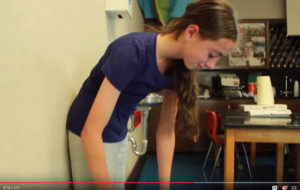
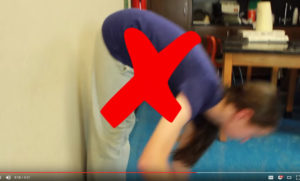
Center of Mass Challenge 4: The Leg Raise
- Stand with your right shoulder and right leg pressed against the wall.
- With both your shoulder and leg touching the wall, “simply” raise your left leg. Your goal is to stand only on your right leg—the one that is touching the wall.
WHAT HAPPENED? This challenge is nearly IMPOSSIBLE. For the same reason as before: because the wall is in the way, your body can’t counter-balance the mass distribution. Your center of mass is over BOTH legs, not just one.
Watch my students in action!
If you don’t have time to perform these challenges in your own classroom—or if you’d like to get a quick look at how they can be set up—take a look at the video below, which was put together “with a little help from my (classroom) friends.” Enjoy!
Educational Innovations sells many unique science demo materials. Among them, some of my favorites are – you guessed it – related to center of mass. For instance, there’s the Balancing Bird Demo, which always fascinates my students. It can balance on anything – even the tip of a pencil!
Around the holidays, I like to give my students their own Small Balancing Birds as gifts. They love them!
And finally, there’s the Balancing Bird Puzzle – a DIY balancing puzzle that requires students to figure out where to place the magnets in order to keep the bird balanced. This one has been a big hit among my kids.
Jeremy Johnson has taught science in elementary and middle school for more than 13 years. He is also the founder of the YouTube channel “SciOnTheFly.” https://www.youtube.com/user/scionthefly

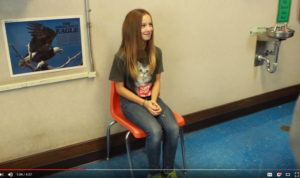
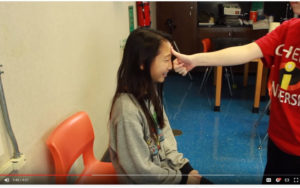
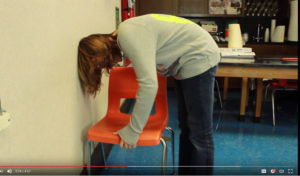
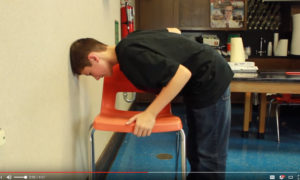
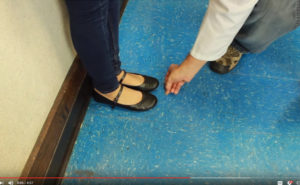
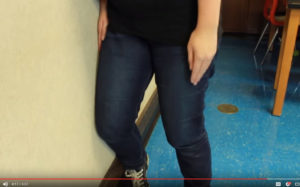
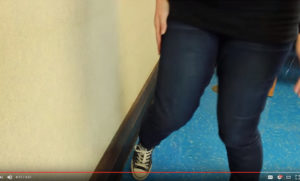
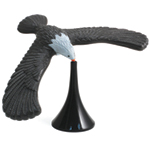
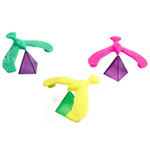
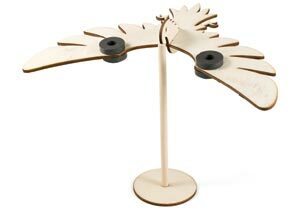
This is amazing and such an interesting way to conduct class. I can’t wait to try it out with my 8 graders. Thank you!
Pretty cool! I tried your experiments out was found them to be very interesting. I never really thought about how my body will automatically adjust itself when I try to stand up or lift a leg.
While I was trying out the chair lift exercise I found that the hard part was not lifting the chair. It was lifting the chair while leaning my head on the wall that was so hard. I tried doing the same experiment while in the middle of the room and had no issues at all with lifting the chair.
After trying again but paying more attention to my body’s position, I noticed that when lifting the chair I was keeping my head closer to my body than in the first experiment. When lifting in the middle of the room I tried to lift the same as when against the wall, but my body automatically adjusted how far I extended my head without me realizing until I paid more conscious attention to my body’s position.
To me that is one of the interesting things about this experiment. By leaning your head against the wall you are forcing your body to extend the head further then it naturally would if you were not leaning your head into the wall. This acts to prevent your body from adjusting your balance to counter where your center of gravity is.
Awesome science! Thanks for helping me learn that by changing the center of gravity you are not simply making a task harder. Sometimes you make doing something impossible. I can also see applications to areas like engineering buildings or designing small gadgets.
I did this with my siblings and it was really fun to do!! Perfect educational fun for quarantine!
This was exciting to do with my kids. They got a blast out of trying to do the different things. Awesome.
If we want understand this by equations and analyze the movement on XYZ , how you we can do that?